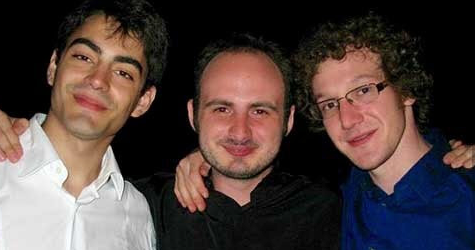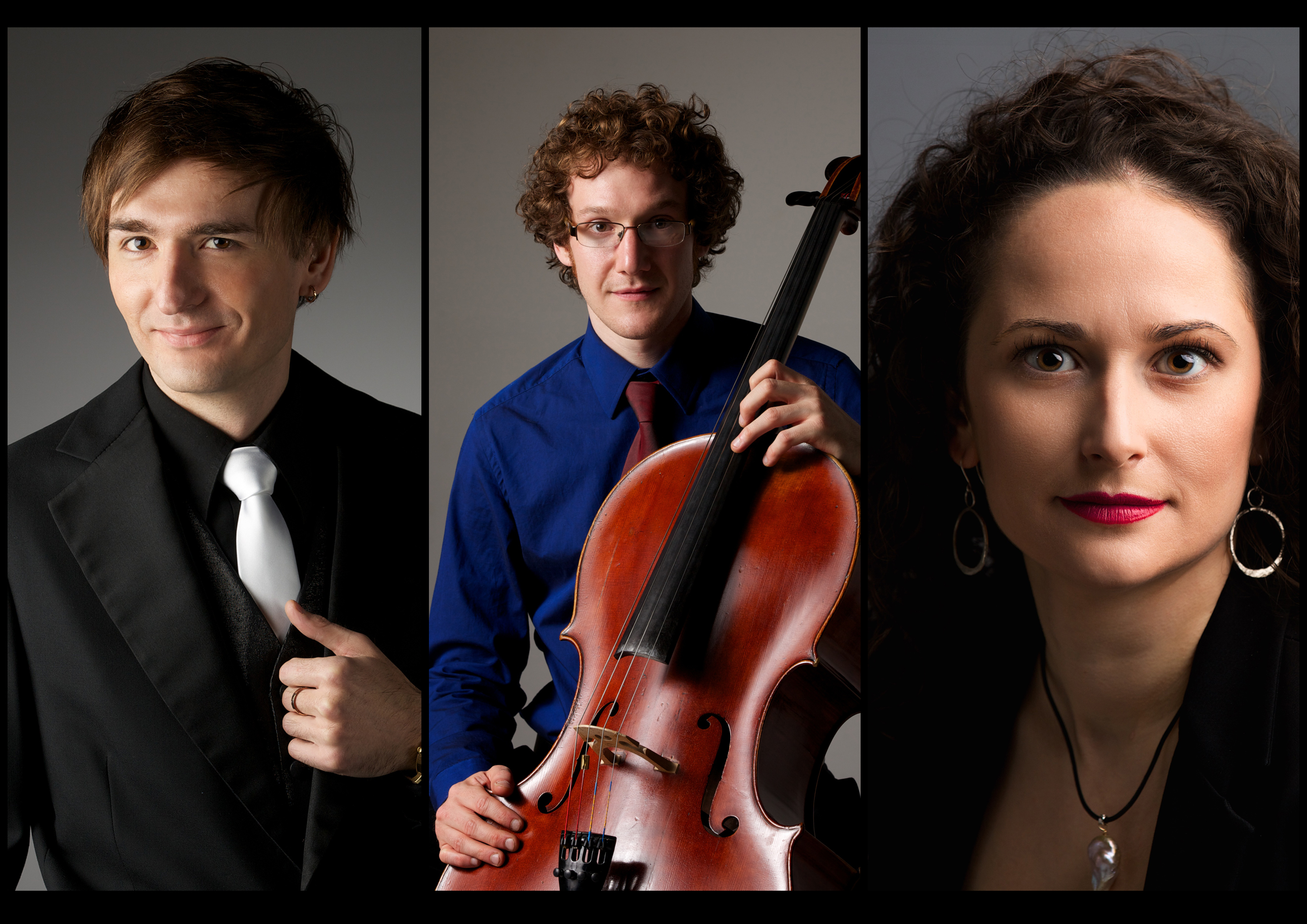The Hellenic-American Cultural Foundation and the Alexander S. Onassis Public Benefit Foundation (USA) present The Olympus Piano Trio
Regi Papa, violin; Ben Capps, cello; Konstantine Valianatos, piano
Merkin Concert Hall, Kaufman Arts Center, New York, NY
November 5, 2015
These Greeks definitely bear gifts, and they’re not Trojan horses. They are the gifts of immense musical talent, coupled with the fearless technique of youth, and passionate commitment to every note they play. Also, the two foundations that presented the event gave New Yorkers another gift: an absolutely free, no tickets required event.
The Olympus Trio, as a whole, created an incredibly velvety tone at all times, scrupulously balanced (sometimes overly so), with unanimity of phrasing. I especially enjoyed the cellist Ben Capps’ expressive left-hand vibrato and his facial involvement: too often the cellist is in the “thankless” role in a trio. The violinist Regi Papa was less demonstrative, but there was much finesse in his understanding of how to expand a phrase, and in his beautiful sound.
The concert began with a ravishing performance of Rachmaninoff’s Trio élégiaque No.1 in G minor (1892), less often heard than the second one (Op. 9). It was composed in four days, and certainly this shows in the overwhelming preponderance of the piano part, but none of this was apparent from the gorgeous reading given by the Olympians. It emerged from “nothing,” just as Rachmaninoff intended, and progressed to its big climaxes elegantly. The coda’s funeral march was particularly haunting.
Next came a Mount Olympus of a different sort: Ravel’s Piano Trio. Here I had high expectations, and I would have to say that this was a “good” performance, but if the group is still together in ten years, it has the potential to become a “great” performance. The sins were mainly those of youth, and I do apologize for nit-picking. The first movement was far too “gooey,” although it is marked (unusually for Ravel) with numerous tempo changes, the players added too much un-French expressive rubato. The excellent pianist Konstantine Valiantos has a distressing habit of playing with his hands not together (I don’t mean where Ravel has so notated, but elsewhere): this may be allowed, perhaps, ONCE per entire concert, but not so often as here, it’s a careless mannerism. Also, Mr. Valianatos was so careful in his balances that there was often not enough piano (!), which is usually not the issue in this piece. He played a misprint that I have spent a lifetime trying to get people to correct (just because the Beaux-Arts Trio recorded it that way doesn’t make it true): the final note in the first movement piano part (right hand) is an E and G in BASS clef, please.
The second movement, Pantoum, was taken at an appropriate, breakneck tempo, with excitement, despite almost derailing the pianist a couple of times. That he did not get flustered at all is to his credit—so scary is this movement. The Passacaille third movement had the right mood, but oddly here Mr. Valianatos played his opening eight measures too loudly and with intrusive, fussy phrasing, thus ruining the “emergence from darkness.” The two strings’ haunting duo between rehearsal numbers 8 and 9 (Durand edition) was perfection. The Finale was robust, with the piano finally asserting itself fully.
After Intermission, the Trio played the New York premiere of an excerpt from a longer multi-media work called “Constantinople” by contemporary Greek-Canadian composer Christos Hatzis. They played “Odd World,” which was a good play on words, as the folk materials whizzed by in quintuplet meters, and other asymmetrical folk-inspired divisions. It was very accessible, and pleased the large crowd greatly.
Finally, they turned their talents and attentions to another pillar of the repertoire: Mendelssohn’s Piano Trio No. 2 in C minor, Op. 66. It was finely phrased, and the quick movements were marvels of clarity. The desynchronization of the pianist’s hands reached epic proportions here (second movement), and it detracted from my total enjoyment, as I began wondering when it would happen next. The pianissimi, which are rarely observed, were perfect. At the fff statement of the “Doxology” hymn in the last movement, Mr. Valianatos truly broke free, honoring the dynamic with his biggest sound of the evening; I imagine he felt that since no one else was playing he could indulge, for he returned to his deferential style immediately after.
When a group is this good, they deserve to grow and become even better. I hope they will be encouraged, for they obviously give audiences a great deal of pleasure with their music.


